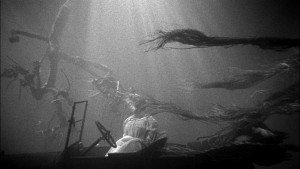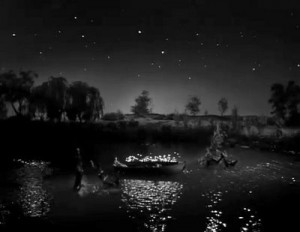Reading Log #6
How does the director, Charles Laughton construct the narratives of his film The Night of the Hunter (1995)?
The Night of the Hunter narrative is based on the cause and effect of character’s actions. Because both the boy’s father and the preacher Harry committed a crime, they have met in the prison. The event then leads to the father spilling information about the money he had hidden to the preacher. This sequence then causes Harry to hunt for the money in which the father’s son, John knows where he had hidden. This chain of events is an example of how narrative relies on causality.
Being that narratives also rely on time and space, how does the filmmaker manipulate the two principles into the film?
Charles Laughton has directed that the film plot will go on a chronological order, relating to its causality. Therefore, as the chain of events is presented in an order of chronological time, the story’s duration is about months in time. This is shown by the growth of the two young characters, John and Pearl, and their journey throughout their escape from the preacher Harry. Viewers can see that their journey took a few overnights from the time of the day that has passed as the two children stopped by places to ask for food. Laughton has also manipulated space with a film noir/German expressionist style to show the children’s escape through the lake. Within the frame, viewers see the children on the boat but infer that Harry is chasing them nearby from the sound and perception outside the frame. These are Laughton’s technique to manipulate the narratives of The Night of the Hunter.


